
As the nation celebrates Azadi ka Amrit Mahotsav (commemoration of 75 years of Indian Independence). The fight against colonial rule in India and particularly in Chhattisgarh constitutes a unique narrative, one which is not marred by violence. Rather a narrative that is full of variegated stories of valor, bravery, Satyagraha, dedication, and sacrifice across the length and breadth of the subcontinent. These stories compose the rich Indian cultural heritage and traditions. Thus, the unsung heroes need not necessarily define the lesser-known freedom fighters. They may, at times, be the leaders whose ideals delineate the Indian value system.
This is an attempt to recall and remember forgotten heroes of our freedom struggle, many of whom might be renowned yet unknown to the new generation. The aim of recreating and bringing forth stories, which lay as faded memories of the past, shall serve as a medium of inspiration and encouragement for the coming generations.
Dayavati Kanwar
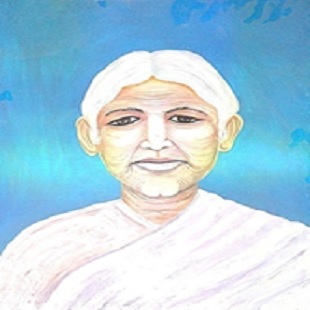
Dayavati Kanwar was born in 1915 in the village of Tamora in Mahasamund. Her father’s name was Mr. Vanmali Singh Kanwar. Her uncle, Raghuvar Singh, was the landholder of Tamora and was dissatisfied with the British government’s forest policy, which is why he joined Yatiyatnalal when the ashram was established in Mahasamund. The impact of opposing British rule also affected Dayavati. In September 1930, national leaders from Raipur and Mahasamund decided to initiate a forest satyagraha in Tamora. A public meeting was held near Tamora in Labhra on September 6, where the villagers were informed about the significance of the forest satyagraha. Dayavati was present at this meeting. She motivated her companions and other women of the village to join the satyagraha, which continued for several days. On September 12, 1930, Section 144 was imposed in Tamora as a crowd of thousands had gathered. Dayavati, holding the tricolor flag, was calling people to the movement, shouting slogans against British rule.
Due to the intensifying movement, many armed police were also present. Police Superintendent Mathura Prasad Dubey attempted to stop Dayavati by snatching the tricolor from her, which enraged Dayavati and she confronted the police superintendent, leading to a lengthy struggle. However, Dayavati managed to uphold the dignity of the tricolor and prevented it from falling into the hands of the police as she moved forward. This incident created an atmosphere of shooting. However, Superintendent Dubey handled the situation and, appreciating Dayavati’s courage, ended the matter. This event sparked immense enthusiasm among the spectators, and they joined the satyagraha with great zeal, but Dubey’s generosity did not sit well with the British police lieutenant, who subsequently transferred Dubey from that position. Nevertheless, this incident made the satyagraha in Tamora memorable.
Ketki Bai Baghel
Kekati Bai was married to Mr. Judwan Singh, a resident of Pathri village in Raipur District. But her married life did not last long. After the death of her husband, the responsibility of raising her children fell on her. She not only made her sons worthy of respect in the society but also taught them patriotism. Dr. Khubchand Baghel was her son who is called an important leader of the national movement and the visionary of Chhattisgarh state. The values given by his mother had such an impact that as soon as the Civil Disobedience Movement of 1930 started, Dr. Khubchand Baghel left his job as a government doctor and joined the movement. Along with him, his mother, wife and brother also became part of the movement. His mother Kekati Bai used to inspire women for the movement. With her inspiration, women from every village participated in the movement.
In the second phase of the Civil Disobedience Movement, Kekati Bai came to Raipur to participate in the main program of boycott of foreign clothes. To conduct the picketing programme, the Congress’s War Committee had also chosen Raipur’s famous women leader Dr. Radhabai. Kekati Bai and Khubchand Baghel’s wife Mrs. Rajkunwar Baghel were also in this movement. On 5 February 1932, two women were arrested while picketing to stop the sale of foreign goods at Kika Bhai’s shop in Raipur, but they were released the next day, but when the number of women increased, they were also treated strictly like other Satyagrahis. Seeing Kekati Bhai’s old age, the police did not want to send her to jail, but she repeatedly started picketing and also stopped eating food to avoid going to jail, so she was sentenced to 6 months’ imprisonment and a fine of Rs. 25. On the arrival of Mahatma Gandhi in November 1933, she attended his meeting with many women and helped in organizing it. After this, she continued to work for the eradication of untouchability throughout her life.
Induru Kewat
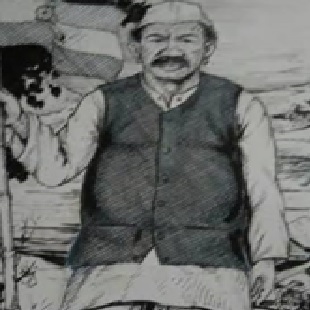
Induru Kewat was a resident of Surangdah village, Durgkondal Block in Kanker District. Initially, he was adopting traditional violent means to get freedom from British rule, but in 1920, he went to Dhamtari on foot with his companions and in 1933 to Durg and met Gandhiji and after that he started Gandhian movement in his princely state. Due to Mangaluram Halba Kumhar and Patar Halba, Surungdoh and Bhejalpani became the main centers of the freedom movement in Kanker princely state. Induru Kewat made Potai Bada the center of political awakening.
The British superintendent of the princely state sent a police squad to catch him, but he used to rub greasy oil on his entire body, due to which he could not be caught. When he was surrounded in the market of village Kodekurse, he jumped into the Kotri river flowing nearby and reached the other end by flowing in the strong current. Due to the river being deep, the police personnel could not jump into the river. Induru Kewat was never caught by the police. After his death, a tricolour flag and some documents were found in his belongings. He had unwavering faith in Gandhiji and was a great patriot.
Ram Prasad Potai
Ramprasad Potai was born in 1920 in Farasgaon village of Kanker. His father Ghanshyam Singh Potai was a prosperous landlord of Kanker. He received his schooling from Kanker and B.A.L.L.B. examination from Hislop College Nagpur in 1944. In 1944, Potai came in contact with Thakur Pyarelal Singh and joined the national movement. In 1945, Congress Party was established in Kanker. Potai was made the President of Kanker branch of Congress Party. He always criticized the British imperialist policy.
In 1948, he was made a member of the Constituent Assembly. In the same year 1948, he became the President of Congress Janpad Sabha and a movement for merger was also launched under his leadership. Ramprasad has an important contribution in bringing public awareness among the people of Kanker State. He passed away on October 6, 1962.
Gend Singh

Under the Bastar princely state, Zamindar Gend Singh of Paralkot Zamindari in Kanker State, along with Abujhmariya tribals, raised the slogan of independence of Bastar in 1824-1825 against the exploitation of Marathas and British officials. This revolution was against the new taxes. They found the exploitative policies of the government dangerous for their existence. On the call of Gend Singh, Abujhmariyas started gathering in Paralkot on 24 December, 1824 and from 4 January, 1824 to 1825, they spread from Abujhmarh to Chanda. The revolutionaries used to send the branches of the Dhawda tree from one place to another as a signal. The entire Mand region was in the grip of the revolution. The rebellion was conducted by the Manjhi people in different groups, and they used to gather in groups at night and plan for the next day. Their aim was to free Bastar from slavery.
On the instructions of Agnew, British administrator of Chhattisgarh or Chanda’s police superintendent Captain Pew, with the help of Maratha and British forces, Gend Singh and his companions were arrested on 12 January, 1825. The revolutionaries were severely suppressed and on 20 January 1825, Gend Singh was hanged in front of his palace. Martyr Gend Singh, who raised the slogan of independence against the British, is not only the first martyr of Bastar but also of Chhattisgarh.
Gundadhur
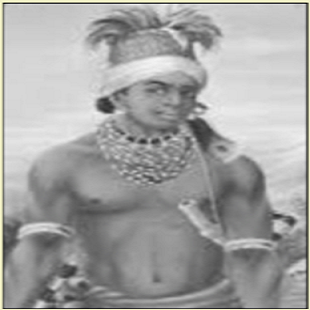
Shahid Gundadhur spearheaded the Tribal Rebellion against the local king and British Rule in Bastar, Chhattisgarh in 1910, through a violent movement called ‘The Bhumkal Movement’, the first war of independence. The increasingly oppressive British Rule in Bastar led to discontent leading to widespread tribal movement towards a common motive. In order to spread the message of the rebellion, creative signaling by adoption of ‘lal mirch and aam-ki-chatni’, locally known as ‘Dara-Miri’ was used as the most effective means of communication. The movement destroyed many British offices and communication networks. On 16th February 1910, a war took place at Khadag Ghat on Indravati river where many people were martyred. The movement was brutally crushed in May 1910, though the British could not catch Gundadhur.
Veer Narayan Singh
Veer Narayan Singh was a landlord from Sonakhan. He spearheaded the 1857 war of Indian independence in Chhattisgarh. He was hanged at Jaistambh Chowk of Raipur, Chhattisgarh.He is also known and considered as “The 1st Chhattisgarhi freedom fighter”. His ancestors were from the Gond tribe and were residing in Sarangarh. Later on, they changed their affiliation from the Gond to the Binjhwar tribe and moved to Sonakhan in Raipur district.
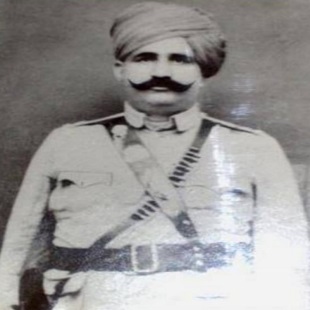
The British arrested him in 1856 for looting a trader’s grain stocks and distributing it amongst the poor in a severe famine year. In 1857 with the help of the soldiers of the British Army at Raipur, Veer Narayan Singh escaped from prison. He reached Sonakhan and formed an army of 500 men. Under the leadership of Captain Smith, a powerful British army was dispatched to crush the Sonakhan army. He was executed on 10 December 1857 at Jaistambh Chowk of Raipur. He became the first martyr from Chhattisgarh in the War of Independence. The Government of Chhattisgarh named the “Shaheed Veer Narayan Singh International Cricket Stadium” in honour of him.
Ramdayal Tiwari
Ram Dayal Tiwari was born on 30 July 1892 in Raipur. His father Pandit Ram Bagas Tiwari was a teacher. Ram Dayal Tiwari had a great desire to study, so by teaching tuitions, he passed the B.A. examination in 1911 and started teaching in Raigarh state. In 1915, he went to Allahabad and also completed his LLB. He had good knowledge of Hindi, English, Urdu, Marathi and Oriya languages. He was practicing law in Raipur since 1915. He contributed to the establishment of Hindi Sahitya Sammelan in Raipur in 1918. He was made the President of Raipur Municipal Teachers’ Union established in 1920. Inspired by Pyarelal Singh, Madhav Rao Sapre and Yeti Yatanlal ji, he started participating in the Gandhian movement and became famous as a good speaker. In 1923, he presided over the Dhamtari Tehsil Political Conference.
During the Civil Disobedience Movement, on 10 July 1930, when volunteers from Raipur were gathered to welcome political prisoners from Akola and Amravati on Raipur platform after getting information about their transfer, they were lathicharged. This led to public outrage and hence on 22 August 1930, an enquiry committee was constituted by the Congress. Tiwari was also a member of the committee. In the same year, Tiwari formed an institution “National School of Politics” with city intellectuals for the work of public awareness.
Vishnu Prasad Sharma
Vishnu Prasad Sharma was born on 24 October 1923. He was the son of Rajguru Pandit Romnath and mother Smt. Rukhmani Devi of Kanker royal family. He received education in Kanker, Jagdalpur, Bilaspur and Raipur, and it was from here that he got the inspiration to participate in the national movement.
The Quit India Movement started after Gandhiji’s arrest on 9 August 1942. On 9 August itself, at 4:00 pm, a procession started from Rashtriya Vidyalaya in Raipur, which turned into a meeting at Gandhi Maidan. Vishnu Prasad was also a part of this procession. He was arrested for singing tricolor songs and raising anti-British slogans. And he was kept in custody in Kotwali police station for two days. During interrogation, the police got the information that Sharma is a brilliant student and he has come from outside to study in Raipur, so being lenient towards him, he was not sent to jail but was punished by beating with sticks in the police station. Sharma was released by the police after warning him not to participate in any agitation or procession in future and was sent back to Kanker. Sharma reached his state and started inspiring people against the British. He passed away on 18 July 2009.
Suvarna Kunwar Devi
Bastar’s ruler Bhairamdev ascended the throne in 1853 at the age of 13. He had two wives, Yuvraj Kunwar Devi and younger sister Suvarna Kunwar Devi who were princesses of Rewa (Baghelkhand). Since both of them had no son, the king married a third time which produced Rudra Pratap Dev who became the king after his father’s death at a young age, but the British government did not give him the rights. The British administrators had full authority by forming the ‘Court of Wards’. When Rudra Pratap Dev became an adult, he was given the title of king in 1908 and in the same year, the forest law was also implemented in the whole of Bastar. A new system was implemented by the British in Bastar, and the exploitation of the tribals also increased. The people of Bastar were dissatisfied and angry with this colonial grip. At the same time, in 1909, in the presence of Lal Kalendra Singh in the presence of thousands of tribals, Rajmata Suvarna Kunwar Devi pledged to establish Muria Raj in Bastar and called upon the people to end both the feudal system and the colonial administration.
On 1 February 1910, there was a wide-spread rebellion all over Bastar, called “Bhumkal”. On 7 February, the rebels had complete control over a town called Geedam. On 21 February, the British made an unsuccessful attempt to break Rajmata and Lal Kalendra Singh. Finally, on 25 February 1910, Lal Kalendra Singh was arrested and exiled from Bastar and Suvarna Kunwar Devi was sent to Raipur jail where she died in November 1910.
Lal Kalendra Singh
Bastar was the biggest princely state of Chhattisgarh. During the reign of Rudrapratap Dev, son of Bhairamdev, a historically famous revolution known as Bhumkal took place in 1910. The British government implemented selfish colonial laws, divided the princely state into 84 parganas, took various kinds of forced labour, bought goods at low prices arbitrarily and strictly implemented the Forest Act in the entire Bastar, due to which their livelihood was destroyed, resentment spread in the entire Bastar, all sections of the society were suffering from these atrocities.
At such a time, the people of Bastar got a leader in the form of Lal Kalendra Singh who became their liberator. His father’s name was Dewan Dalganjan and mother’s name was Lakshmi Kunwar Devi. He was made the Dewan of Bastar in 1881 but was removed in 1886 through conspiracy. He was very influential and popular. On the occasion of Dussehra in October 1909, Lal Kalendra Singh and Rani Suvarna Kunwar Devi pledged to end the British rule and establish Muriaraj in a village called Todki in Jagdalpur. Bhumkal incident took place on 1 February 1910. Looting took place at many places, many employees were killed, whose leader was Gundadhur. He supported this, which was encouraging the revolutionaries. British officer Gayer arrested Lal Kalendra Singh along with 15 major revolutionaries on 25 February 1910 and sent him to Ellichpur jail where he died.
Aaitu Mahara
The rebellion of 1910 in Bastar is called the great rebellion i.e. Bhumkal. Its leader ‘Gundadhur’ is still remembered. This rebellion was against the atrocities of outsiders and foreigners as well as the Dewan Baijnath Panda. Preparations for this rebellion were made in the same way as the revolution of 1857. To crush this movement, a large number of innocent tribal people were killed by the British. One of the leaders of this movement was Aitu Mahara of the Madia tribal group.
Aitu Mahara, a Madia youth of Chhote Dongar Farasgaon area of Abujhmad Narayanpur, had formed his own group to free his area from the British and the Dewan. The rebellion was started by looting the Kukanar market on 4 February 1910. On getting the news of this, Aitu also rebelled and established his control over Chhote Dongar from Antagarh and drove away the outsiders. His control lasted till 12 March 1910. He behaved harshly with the police and forest officials, beat them up. Foreigners and other outsiders fled from these areas out of fear of him.
To suppress this rebellion, soldiers were called from Madras, Punjab and other places. The main military officers of this army were ‘Duri’ and ‘Gear’. Duri retreated after losing in Abujhmad and took refuge in Narayanpur. At the same time, on March 12, Supreme Commander Gear also arrived. Due to this, the army gathered here. Aitu had stopped the British army for some time. But due to the increase in his strength and the extreme terror-filled actions of the British soldiers on the general public, Aitu had to retreat. Ultimately Aitu Mahara was arrested. He was sentenced to 1 year. During this period, he remained in Raipur Central Jail.
He was mentioned in the Chief Minister’s 15 August Independence Speech in 2025.
Nagul Dorla
The tribals’ protest against the colonial rule continued in Bijapur. The tribal struggle had taken a violent form from a rebellion. After implementation of new Forest Policy in 1859, the British awarded tree felling contract to Nizam of Hydrabad. Nagul Dorla, who was the landlord of Fotkel, along with Rambhoi, the landlord of Bhopalpatnam, Juggaraju and Jummaraju, the landlord of Bheji, protested against the installation of sawmills by the contractors and the felling of the forest.
They had not only economic but also religious ties with the Sal and Teak trees. They gave the slogan “One Tree- One Head” and burnt the wood depots, beheaded the saw cutters, looted money and forced the British employees to flee. This rebellion is known as ‘Koi Rebellion’ as it was a Dorla (also known as Koi) tribe led rebellion. The British avoided sending their soldiers in the inaccessible forest area and the rebellion led by Nagul Dorla was successful.
Dhurwa Rao
Dhurvarao was the talukdar of Lingagiri Bhopalpatnam, Bijapur. His name is sometimes found as Dharmarao. Dhurvarao was the talukdar of the Madia tribe and was against the interference of the British. During British rule, the forest related laws and the new tax system were implemented, all these rules were painful for the tribal society. The British government appointed contractors to cut trees in the forests on contract by giving licenses, who were making the local people do forced labor by keeping them hostage. Against this, Dhurvarao gathered the Madia and Dorla tribals and revolted. In 1856, Dhurvarao had been getting direct or indirect support from other anti-British landlords. Dhurvarao was adopting the guerilla warfare system. He had started collecting supplies for a long war by looting the villages under British control.
The British government sent a large army under the leadership of Captain Elliot to the region, which Dhurvarao attacked with his arrows on the Chintalnar hills on March 3, 1856. But the landlord of Bhopalpatnam had joined the British, so after the fight till noon, the British army started getting the upper hand due to the lack of weapons with the tribal army and took Madia women and children hostage, which also included Dhurvarao’s children and wife. So, he had to surrender. The British government sentenced Dhurvarao to death and he was hanged on March 5, 1856. It was accepted to the first armed revolt of Bastar Tribals and is known as the Great Freedom Struggle of Bastar.
He was mentioned in the Chief Minister’s 15 August Independence Speech in 2025.
Yado Rao
During the rebellion of Lingagiri’s Madia leader Dhurvarao in 1856, the landlord of Bhopalpatnam supported the British army, while his son Yadorao was against the British rule. He was a friend of Dhurvarao who rebelled against the British and wanted to drive the British out of his area by joining hands with him. After Dhurvarao was hanged, Lingagiri taluka was given to Bhopalpatnam. This situation was good for Yadorao because he got the support of warriors trained by Dhurvarao. He secretly started organizing the Telanga and Dorla tribals against the British. The tribal people were troubled by the economic policies of the British rule.
Yadorao organized tribal groups and adopted guerilla warfare against the British because many nearby landlords were supporting the British. He raised an army of 2000 tribals, most of whom were from the Dorla tribe. Baburao, the landlord of Momanpalli, was also supporting him. Thus, all three leaders openly declared rebellion against the British rule. But Yadvarao’s father got his son arrested and, on his orders, he was sentenced to death in 1860.
He was mentioned in the Chief Minister’s 15 August Independence Speech in 2025.
Vyankat Rao
The impact of the revolt of 1857 was at the national level, but Lingagiri’s landlord Dhurvarao had blown the bugle of revolt in 1856 itself. Therefore, some landlords here started supporting Dhurvarao, among whom was Venkatrao, the landlord of Bastar, Arpalli and Ghont. The objective of all of them was freedom from the British rule, with which the increase in rent, forced labour and forest act came automatically. After the arrest of Bhopalpatnam’s landlord Yadorao, who was Venkatrao’s father, Baburao and Venkatrao remained anti-British, the British very cleverly separated the two. Ahir’s landlord Lakshmibai, pretending to be a friend, deceived Baburao and got him arrested. Venkatrao alone was supported by the Rohilla Muslim fighters for some time.
Knowing the weak situation, Venkatrao came to live secretly under the protection of King Bhairamdev of Bastar. Bastar’s Diwan Dalganjan was also in favour of the rebellion. The British got information about Venkatrao hiding in the Bastar palace through spies. Ahir’s landlord Lakshmibai also sent a letter to the Deputy Commissioner of Chanda on May 11, 1859 informing him about Bhairamdev hiding Venkatrao and the rebels in the palace. On the basis of the Deputy Commissioner’s report, Bhairamdev was interrogated rigorously. Bhairamdev handed over Venkatrao to the British. He was hanged in April 1860.
He was mentioned in the Chief Minister’s 15 August Independence Speech in 2025.
Babu Rao
Baburao was the patriotic zamindar of Momnapalli, a zamindari of Bijapur, under the Bastar princely state. He was young and fiery. He was helping Dhurvarao in fighting against the British. The good fighters of his zamindari were fighting with Dhurvarao against the British. After Dhurvarao was hanged, he openly came forward to fight against the British with Yadorao. Zamindar Vyankatrao of Arpalli and Ghont taluka also came with him. The British were frightened by the combined power of Yadorao, Baburao and Vyankatrao.
An army under the leadership of Captain Crichton was in Bastar equipped with modern weapons. Even then, these three zamindars attacked them with their two thousand soldiers and caused them great damage. On April 29, 1858, they attacked three telegraph employees Gartland, Hall and Peter. Two British officers were killed in this. Peter escaped. After this incident, Captain Crichton became cautious, and he wooed Ahir’s landlord Lakshmibai by luring her and threatening her with the army.
At the behest of the British, Lakshmibai secretly invited Baburao to her landlord’s place by deceiving him in the name of help. Baburao was happy to receive this news that his strength would increase with the help of Lakshmibai. He could not understand the conspiracy behind the invitation. Before Baburao could reach Ahir, Kingston’s army, which was lying in wait, caught him and brought him to Chanda and on 21 October 1858, he was hanged in Chanda itself, accusing him of armed rebellion against the British Empire and killing a British officer.
Girija Shankar Mishra
Girija Shankar Mishra was born on 7 June 1887 in Raipur. His father’s name was Pandit Vansh Gopal Mishra and mother’s name was Ramratti. After completing his matriculation education, he joined his father in the work of priesthood. Along with this, he also actively participated in the programs of national movements along with his peers Maulana Rauf, Dhaniram Verma, Premchand etc. He became a trained Satyagrahi by participating in the 1 week training of Satyagrahis before the Individual Satyagraha. He was punished for giving anti-war speeches and raising slogans in the second phase of the Individual Satyagraha in 1941.
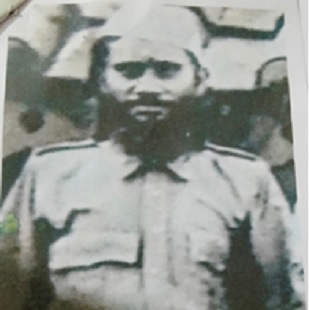
On 9 August 1942, after Gandhiji’s arrest, he controlled the violent procession that took place in Raipur. This procession turned into a meeting at Gandhi Chowk in Raipur. Here Mishra criticized the government for Gandhiji’s arrest. He was arrested for giving a speech against the war and the imperialist policy of the British government and was sentenced to six months. During the Quit India Movement, he had helped his revolutionary comrades and had hidden explosives and inflammable materials in the house, due to which the police had searched his house several times. His friend was considered a threat by the police and sent to the jail in Andaman Islands. He also stayed in Andaman for some time to free him from jail. There he tried to escape his friend by taking a swimming device in the sea. After this, Mishra also joined the Goa Mukti Dal and went to Goa. He died on 8 June 1972.
Kranti Kumar Bhartiya
Kranti Kumar Bhartiya was born in Calcutta in 1894. His father’s name was Devkinandan. He was a spiritual leader who served the country. His area of operation was Uttar Pradesh and Chhattisgarh. He came to Bilaspur around 1930. After some time, he came to Raipur and stayed with his close ones in their residences here. After fighting against the Rowlatt Act in Delhi in 1919, he travelled to places like Rajasthan, Punjab etc. and reached Gurgaon in Uttar Pradesh, where he was imprisoned for one year. He was also associated with the Kakori case. After that, he was arrested in the Ferozepur robbery case in 1920 and spent 4 years in jail.
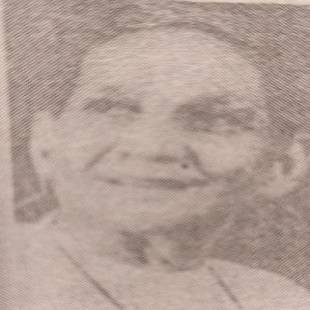
In 1930, he escaped from the Kashi Post Office robbery case and reached Bilaspur and took part in the Civil Disobedience Movement. On 18 August 1930, under his leadership, the tricolour was hoisted in the Town Hall and on 4 August 1930, he himself snatched the tricolour from the hands of the police and hoisted it in the Government High School. Due to this, he was sentenced to 6 months in prison. During the Second Civil Disobedience Movement, he came to Raipur. Due to his contact with Yatiyan Lal, he went to Mahasamund and was arrested in Pacheda on 12 January under the boycott of foreign clothes and prohibition movement. From there, he was sent to Raipur Central Jail. Here he was tortured a lot. He was sentenced to 30 canes. On getting information about this, the youth of Raipur got agitated and to take revenge for this incident, they wrote posters with their blood and pasted them at many places in the city. He was sentenced to 6 months. Due to the beating by the police, his eardrums were damaged, and he became deaf.
Through his work and fearlessness, Bharatiya became a source of inspiration for the youth of Chhattisgarh. In 1933 in Gondia and in 1935 in Multai, he was sentenced to 1 year imprisonment each for inciting people by reciting and interpreting the Ramayana. Before the Quit India Movement in 1942, Kranti Kumar, along with Parasram Soni, Sur brothers and other youths, had planned a big revolution in Chhattisgarh through bombs and guns, but due to one of his associates turning informer, all the major people were arrested in July 1942. This was named the Raipur Conspiracy Case. In this incident, Kranti Kumar was sentenced to 2 years of rigorous imprisonment. He died on 2 August 1971.
Parasram Soni
Parasram Soni was born on 3 August 1920 in Kankali Para of Raipur. He had studied up to matriculation. He became familiar with patriotism from the time of schooling. At that time, a patriotic leader Narayanrao Ambilkar used to roam from school to school raising patriotic slogans carrying the tricolour. Ambilkar became his source of inspiration and from his school days itself, the seeds of hatred for the British rule were sown in his mind. He went to St. Paul’s in Raipur to study in high school. There he met friends like B.B. Sur, Nikhil Bhushan Sur, Sudhir Mukherjee, etc., all of them were full of revolutionary thoughts.
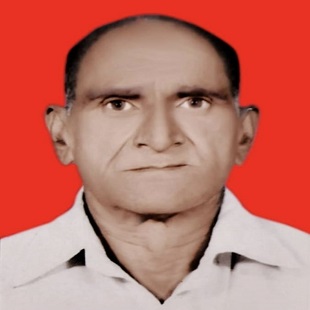
Parasram Soni had read Sachindra Sanyal’s book Bandi Jeevan, Tapasvi Sundarlal’s book Bharat Mein Angreji Raj and Bhagavad Gita. This inspired him to become like the revolutionaries of Bengal and Bhagat Singh and Chandrashekhar Azad and from 1939 itself, with the help of his friends, he started collecting material and necessary knowledge to make bombs. The political environment of the country had become angry due to the anti-World War II sentiments. This also influenced him and he started making efforts to make bombs and guns. For this, he selected capable friends and included them in his organization. Apart from the Sur brothers and Sudhir Mukherjee, Dashrath Lal Chabe, K.S. Thite, Devikant Jha, Girilal (who was an expert in making guns), Mangal Mistri, Prem Vasnik etc. were included in it.
B.B. Sur became a dentist. A revolutionary from Bengal, Srishtidhar Mukherjee, came to his clinic. He called Soni to Jabalpur, where he received training to make bombs. By 1942, he had become successful in making good bombs and guns. But while testing the bombs, he had come under the police’s radar. The intelligence police followed him for almost a year and made one of his closest friends Shivanand an informer by luring him with money. He got Soni arrested with a gun. After this, 10 other companions of his were also arrested. On the basis of 9 months of court proceedings and statements of 191 companions, all of them were convicted under the Explosive Materials Control Act and Arms Act. Parasram Soni was sentenced to 7 years. But after the formation of the interim government, he was released on 26 June 1946. He died in 2002.
Kunj Bihari Chaube
Kunj Bihari Chaubey was born on 16 July 1916 in Rajnandgaon. His father’s name was Chhavilal Chabey and mother’s name was Rambati. While studying in Rajnandgaon High School, he started showing a strong sense of patriotism and he removed the Union Jack from a pole near the school and burnt it and put the tricolor flag in its place. When the headmaster came to know about this, he was punished with flogging and he was also jailed for 2 weeks. After this incident, Kunj Bihari Chaubey started creating awareness among people through his writings and at a young age he composed patriotic songs and awakened the feeling of patriotism among the youth and prepared them for rebellion. He also wrote poems against alcoholism. His compositions are currently taught in the college level curriculum. The British Diwan of Rajnandgaon State, McGettin, prohibited his entry into Rajnandgaon State. Then he stayed with Vinoba Bhave in Gandhi Ashram Wardha.
In 1942, he came in contact with Parasram Soni of Raipur and joined the revolutionary organization and again started living in Rajnandgaon with his family. Shortly after Parasram Soni was arrested in July 1942, Kunjbihari and his younger brother Dashrath Chaube were arrested from Rajnandgaon. The case was heard for 9 months in the court of Magistrate Keravala. In which both the brothers were acquitted on the basis of doubt, but they had to remain in jail for 9 months during the hearing.
The ideals of Parasram Soni’s organization were Sardar Bhagat Singh and Sachindra Sanyal who used to awaken the feeling of fierce nationalism in the hearts of the people by sacrificing themselves. Kunjbihari became spiritual after coming in contact with Vinoba and Gandhi. Hence, to spread national consciousness among people, he wrapped himself in a quilt and shouting slogans of Bharat Mata Ki Jai, Vande Mataram, he sacrificed himself for the country by publicly immolating himself on 5 January 1944. At that time, he was only 28 years old.
Shivdas Daga
Shivdas Daga was born in Bikaner in 1885. His father’s name was Bisesar Das and mother’s name was Gomti Devi. At a very young age, he started living in Arang near Raipur. He received his primary education in Raipur. Daga soon became famous as a successful farmer and businessman as well as a person working for social upliftment. Shivdas was popular among the people. His abilities were also discussed in the government. This is the reason why in 1919 he was given the respected and important post of Honorary Magistrate. He remained a true Gandhian leader throughout his life.
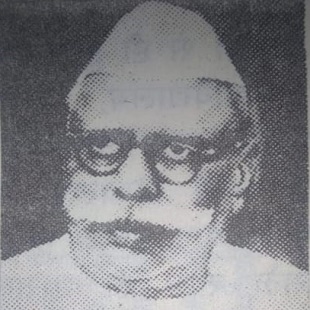
With the arrival of Gandhi in 1920, he started leading the programs of the Gandhian movement and he resigned from the government post and participated in the non-cooperation movement. After participating in the Congress session in Nagpur in December 1920, he made a special contribution in opening the National School in Raipur, due to which he was appointed the first president of National School Raipur. After this, he continued to play a leading role in public welfare works and political programs. During the Civil Disobedience Movement, National Week was celebrated in entire Chhattisgarh including Raipur from 6 April to 13 April, in which the message of the movement was conveyed to the people through meetings, processions and songs. Raipur district was led by Shivdas Daga along with Wamanrao Lakhe, Lakshmi Narayan Das, Thakur Pyarelal Singh, Maulana Rauf. Due to his active participation and participation in the prohibition movement, he was sentenced to imprisonment from 25 June 1930 to 12 March 1931. He was released due to the Gandhi Irwin Pact. In 1939, he played an important role as the Deputy Welcome Chairman in the Organizing Committee of the Tripuri Congress Conference in Jabalpur. He remained the President of Raipur Congress Committee for many years.
In 1940, while doing individual Satyagraha, he was arrested along with 74 companions from Mana in Raipur on 27 November 1940. Daga had also gone to Mumbai to participate in the Quit India Movement convention. While returning from there, on 10 August 1942, he and other important leaders of the province were arrested at Malkapur railway station on the border of Madhya Pradesh along with Pandit Ravi Shankar Shukla, Mahant Laxminarayan Das. During this period, he was kept in Balor and Jabalpur jails. He had contributed to the Harijan hostel established by Pandit Sundarlal Sharma. He had donated land and 20 thousand rupees for the construction of the Congress Bhawan in Raipur. Dagapassed away on 10 June 1952.
Vasudev Devras
Vasudev Devras was born on 5th September 1914 in Tilak Nagar, Bilaspur. In 1928, Vasudev Deoras formed Vanar Sena in Bilaspur by involving school students. Through which, Prabhat Ferries were taken out in the morning. In which mass awareness was created among the people for freedom. Slogans like Quit India were raised in Prabhat Ferries. In those days, the Union Jack was hoisted in government schools. It was taken down and the Tricolour flag was hoisted. During this, some of his friends also accompanied him. As a result, Deoras ji was punished. As a punishment, he was left in the dense forest of Ratanpur from the government vehicle of that time. From where he returned safely, because he was well acquainted with the Ratanpur area (that was his maternal grandmother’s village).
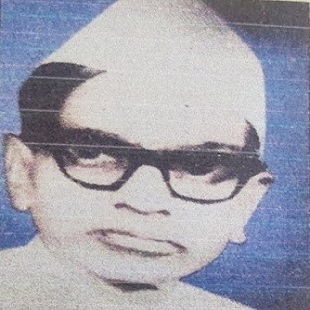
Due to continuous work against the government and participation in Garhwal Day, he had to leave Bilaspur. After this, he started living with his uncle in Nagpur. It was here that he passed his B.Sc. During this period, two major incidents took place in Nagpur, one was the robbery of Amravati and the other was the Sitabardi incident. In both of these, his name cropped up. Hence, he had to leave Nagpur. Then he went to Banaras, where he wanted to pursue his further studies. But due to his participation in the national movement, he was not getting admission. Then E. Raghavendra Rao recommended for him. After his recommendation, Devras got admission in Kashi Hindi University of Banaras. From where he passed the Ayurvedacharya Medicine and Surgery (A.M.S.) examination. In Banaras, he met Pt. Madan Mohan Malviya. During his education in Banaras, the revolutionaries had changed his name to Raksha, who used to carry out secret plans. On 16 August 1942, Devras along with his comrades Kranti Kumar Bhartiya, Ramcharan Sahu and Sikar Rao Pokli, removed the Union Jack from the top of the District Court. He was arrested and kept in Raipur, Jabalpur, Naini and Bilaspur jails. After which he was released on 7 July 1944. He died on 29 December 1977.
Dr Mahadev Prasad Pandey
Dr Mahadev Prasad Pandey was born in Brahmin Para Raipur on 17 January 1929. His father was of national ideology and used to go to the meetings of leaders to listen to their speeches. He had an influence on the child Mahadev. He also used to go with him. He also went with his father to the Tripuri session of the Indian National Congress in 1939. He also participated in the Individual Satyagraha.
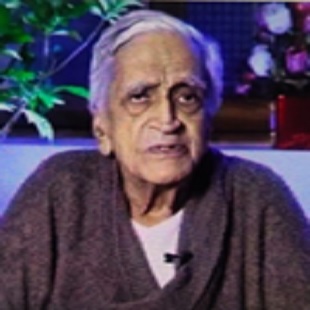
He also joined the Quit India Movement on 9 August 1942 in a huge procession that started from Rashtriya Vidyalaya and started from Gandhi Chowk raising nationalist slogans. The procession was led by Kamal Narayan Sharma, Tretanath Tiwari and Harisingh Darbar. The procession turned into a meeting at Gandhi Chowk. The meeting was presided over by Tretanath Tiwari. Many people were arrested in the meeting. Mahadev Prasad Pandey was also arrested. He was sentenced to 6 months. He was the youngest prisoner in Raipur jail. Later he received a degree in Ayurveda from Banaras Hindu University. He was awarded the Padma Shri in the field of education and literature in 2007. He passed away on 27 March 2021.
Mahant Laxmi Narayan Das
Mahant Laxminarayan Das was born on 29 May 1900 in Banda district. His father’s name was Guru Biharidas. He came to Raipur after his father’s death at the age of five and at the age of eight he was made the Mahant of Jaitusaav Math. He had received education up to middle school. In a part of this Math and temple, Mahavir Vyayam Shala was established in 1910, the purpose of which was to organize the youth of the society in the interest of the nation, just like Tilak had established Akharas in Maharashtra.
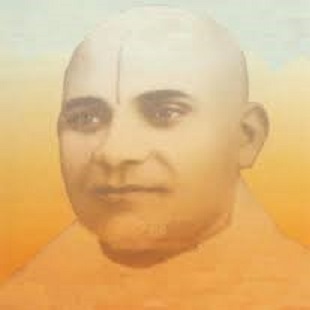
Mahant Laxminarayan joined Gandhiji from his first arrival and participated as an active worker in the Congress session of Nagpur in 1920. On 11 October 1921, while participating in the Non-Cooperation Movement, he gave special cooperation in the exhibition of Khadi at Ravan Bhata in Raipur. Due to his efforts, Khadi Bhandaar was established on 2 October 1930. By the time of the Civil Disobedience Movement of 1930, he had become a leading leader of Raipur. While leading protests and rallies against foreign clothes and liquor, he became famous as Bhimsen’s incarnation among the five Pandavas of Raipur. He was a prominent member of the Mahakoshal Rajnitik Parishad Sangharsh Samiti formed on 13 April 1930. On 29 January 1932, while celebrating Peshawar Day, he was arrested along with Nandkumar Dani and Dr. Khubchand Baghel.
He also participated in the Individual Satyagraha Movement. On 27 November 1940, he was arrested in Mana along with his 74 companions. He had gone to Mumbai to listen to Gandhiji’s speech in the Quit India Movement. While returning from there, on 9 August 1942, he was arrested at Malkapur station along with Pandit Ravishankar Shukla, Shivdas Daga, Dwarika Prasad Mishra etc. He was sentenced to a total of 5 years 6 months and 15 days in prison. He died on 15 March 1987.
Maulana Abdul Rauf Khan
Maulana Abdul Rauf Khan was born on 27 March 1894 in Raipur. His father’s name was Gulmir Khan and mother’s name was Samira Begum. His father was a Subedar in the British Army, but he died when Rauf was two years old. His elder brother Abdul Rashid was in the police. Despite this family background, Abdul Rauf became a patriotic freedom fighter. In Dhamtari, he came in contact with Babu Chhotelal Srivastava and Mahant Laxminarayan Das. In 1920, he attended the Congress session in Nagpur and was elected minister of the Raipur District Khilafat Committee established in 1921. To make the non-cooperation movement successful, he promoted Khadi and with his inspiration, Muslim women abandoned purdah and participated in the movement and learned to use the spinning wheel.
He was the source of inspiration for Anjum Begum, who led the Khadi exhibition held in Ravan Bhata in 1921. His participation in national programs was so great that in 1922 he was sentenced to 9 months under section 108. He was imprisoned with Pandit Sundarlal Sharma. Sharma used to publish a handwritten newspaper “Shri Krishna Janma Sthan Samachar Patra” in the jail. He was imprisoned with Pandit Sundarlal Sharma in the jail in which Rauf Khan’s thoughts and poetry were published. He used to write under the pseudonym “Mehvi”. In 1928, Youth League was formed whose organizers were Thakur Pyarelal Singh, Yatiyan Lal and Abdul Rauf Khan. In 1930, when the Civil Disobedience Movement started, he was one of the 7 members of the committee formed for the successful conduct of the movement in Raipur district. At the same time, an unknown poet composed a poem in which he saw the five major Satyagrahi leaders of Raipur as Pandavas, with the belief that they would be successful in this religious war. Maulana was considered to be the incarnation of Nakul in this. He was arrested along with his comrades on 25 June 1930 and again on 15 February 1932 in the second phase of the movement. He went to jail four times during the Individual Satyagraha in 1940-41.
He was arrested on 12 January 1941, 31 March, 1 May and 10 June in Kurud, Nagari and Panduka respectively. He served 2 years and 6 months rigorous imprisonment in the Quit India Movement. The hardships and atrocities in jail broke his health and even after coming out of jail, he could not survive for long. He died on 27 March 1945.

 Home
Home Syllabus
Syllabus Contact Us
Contact Us




